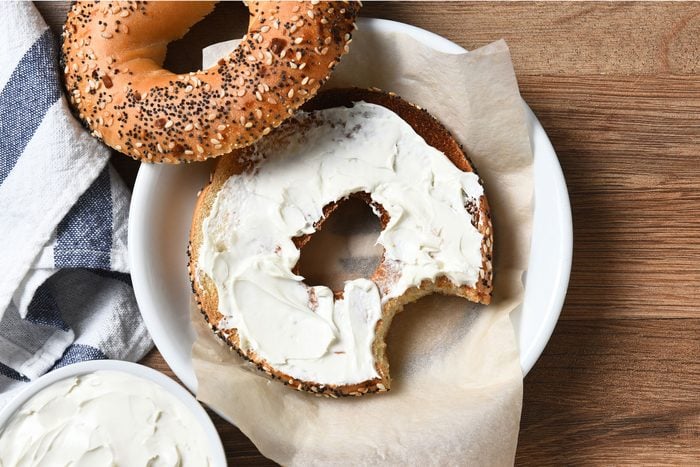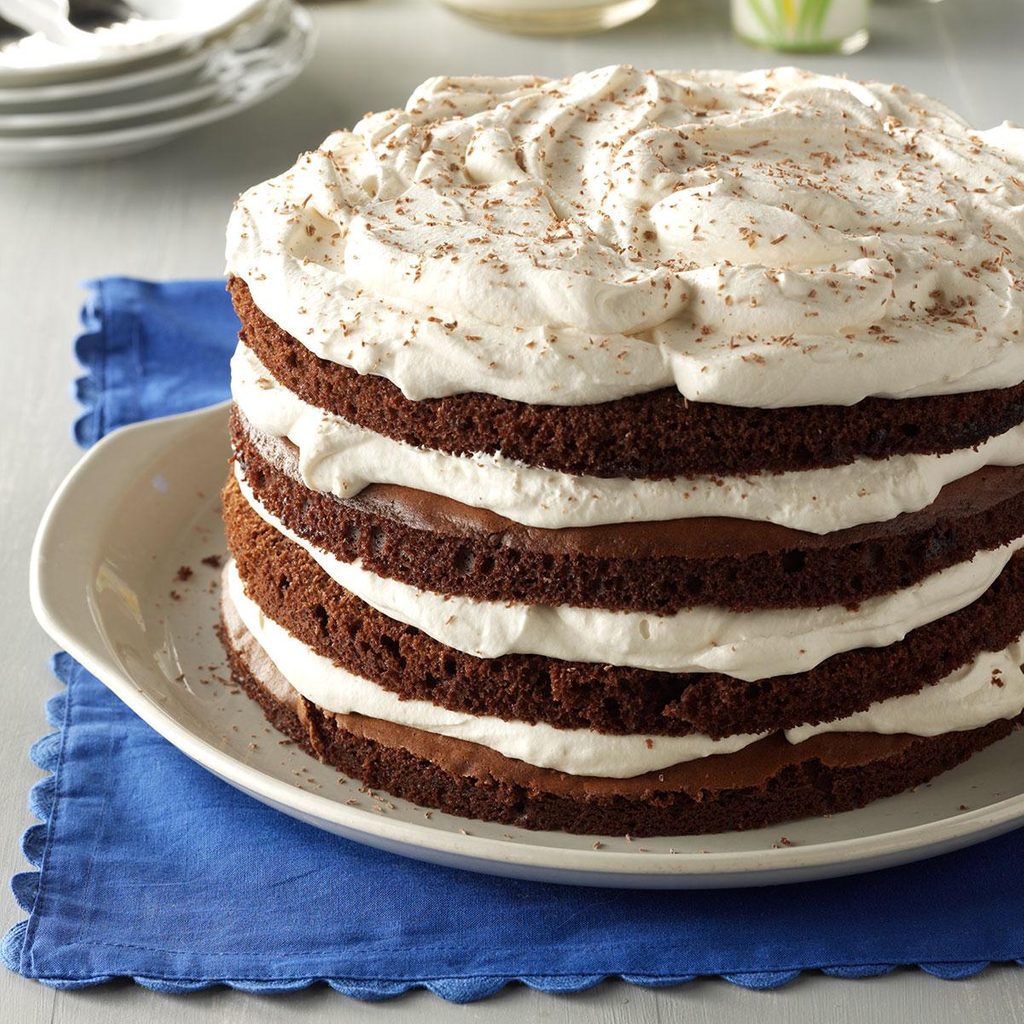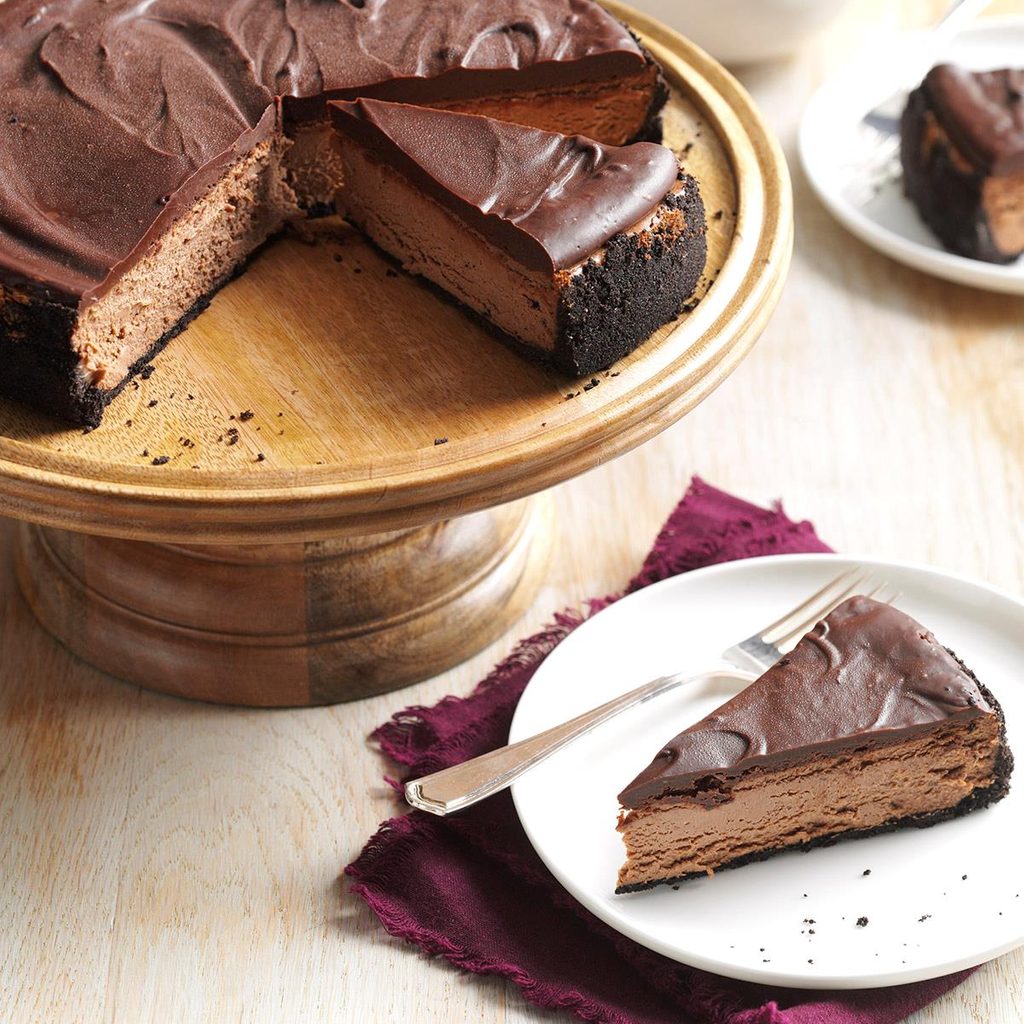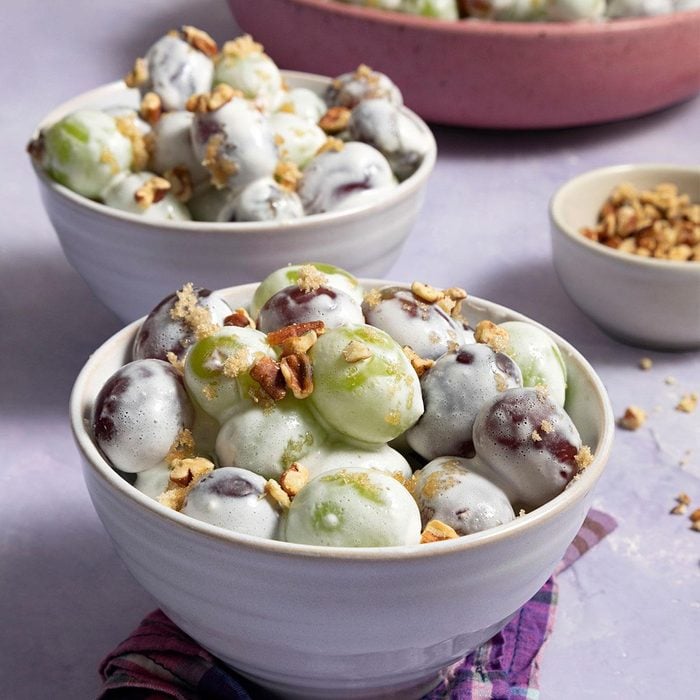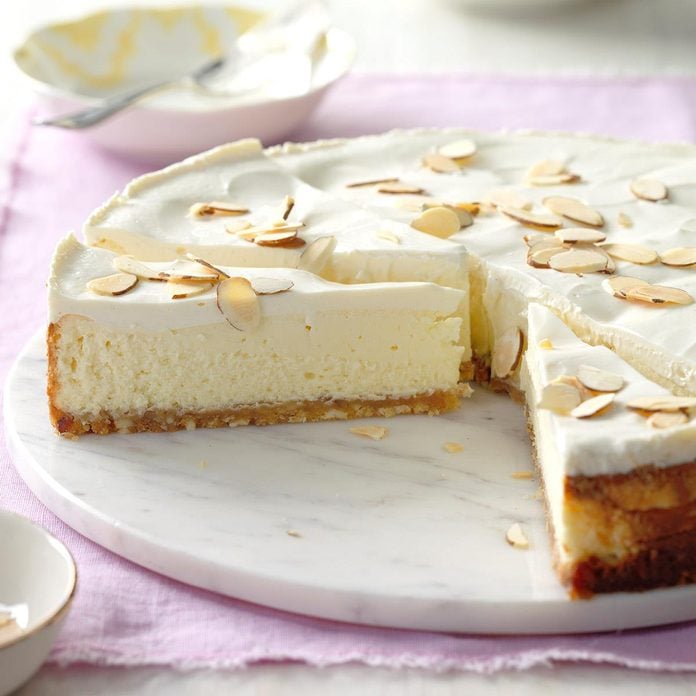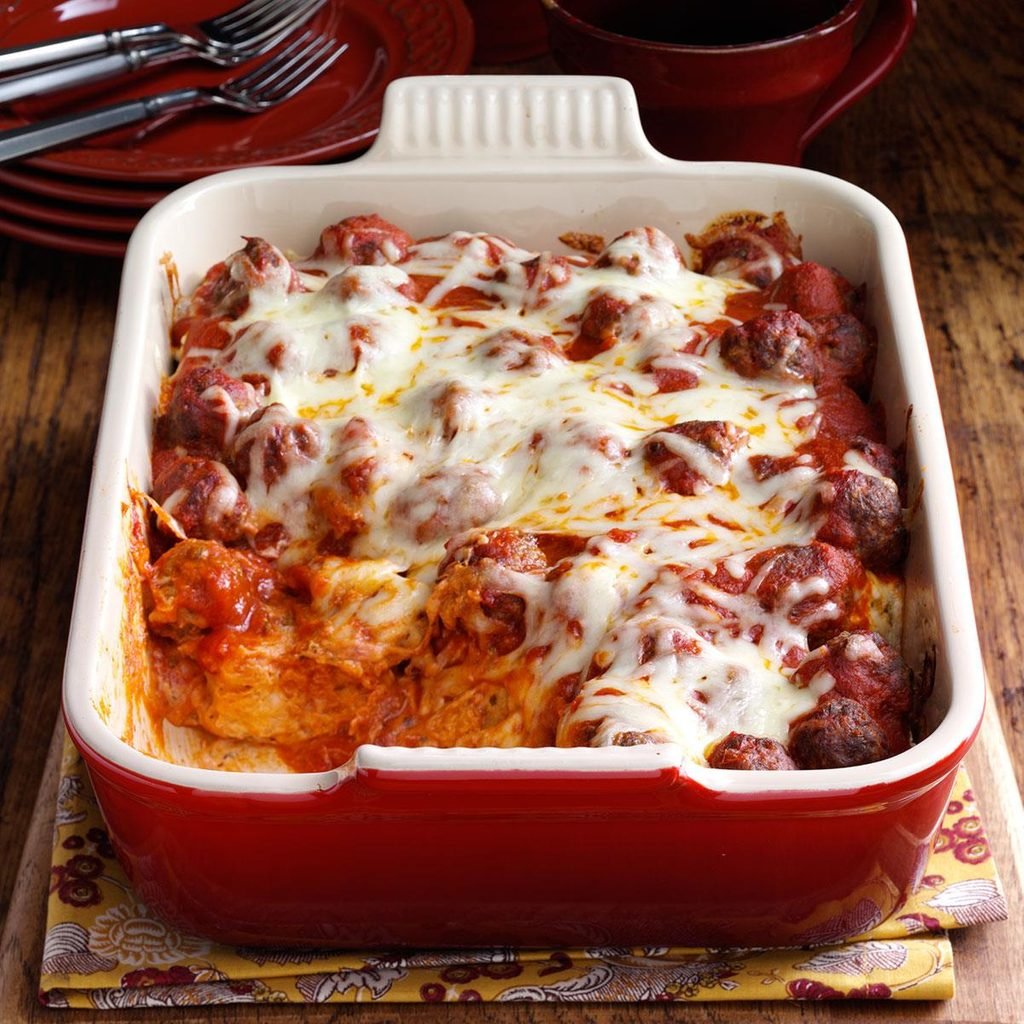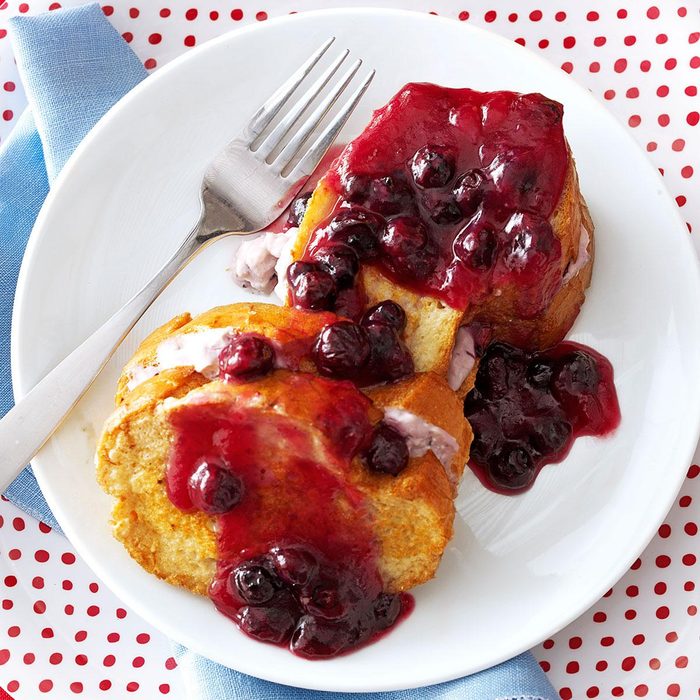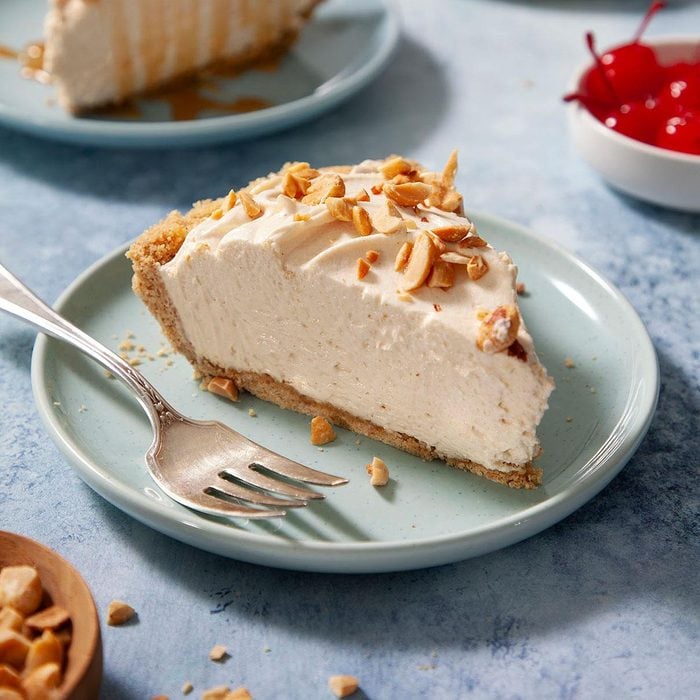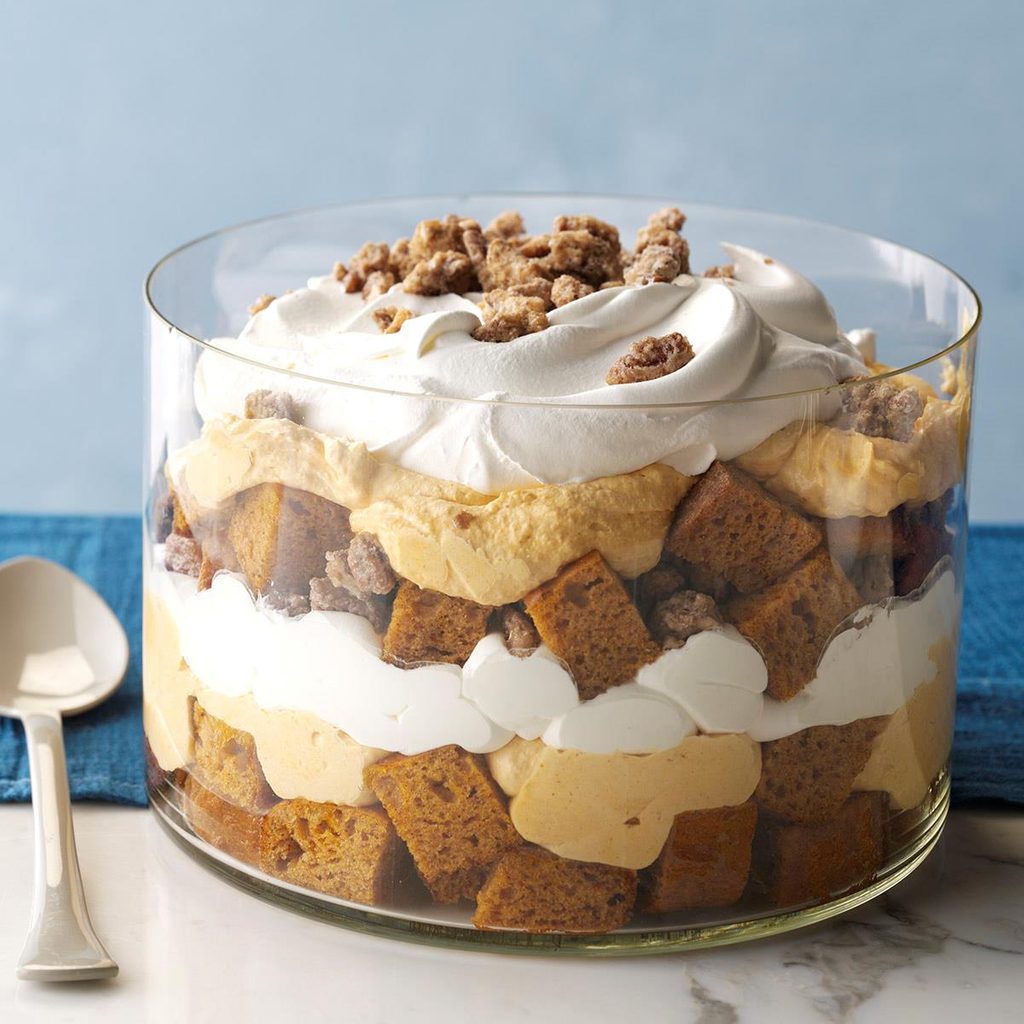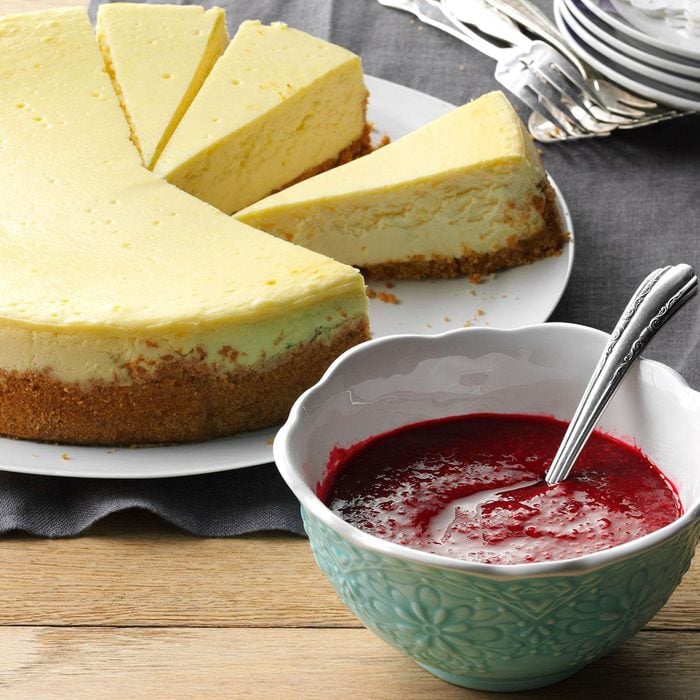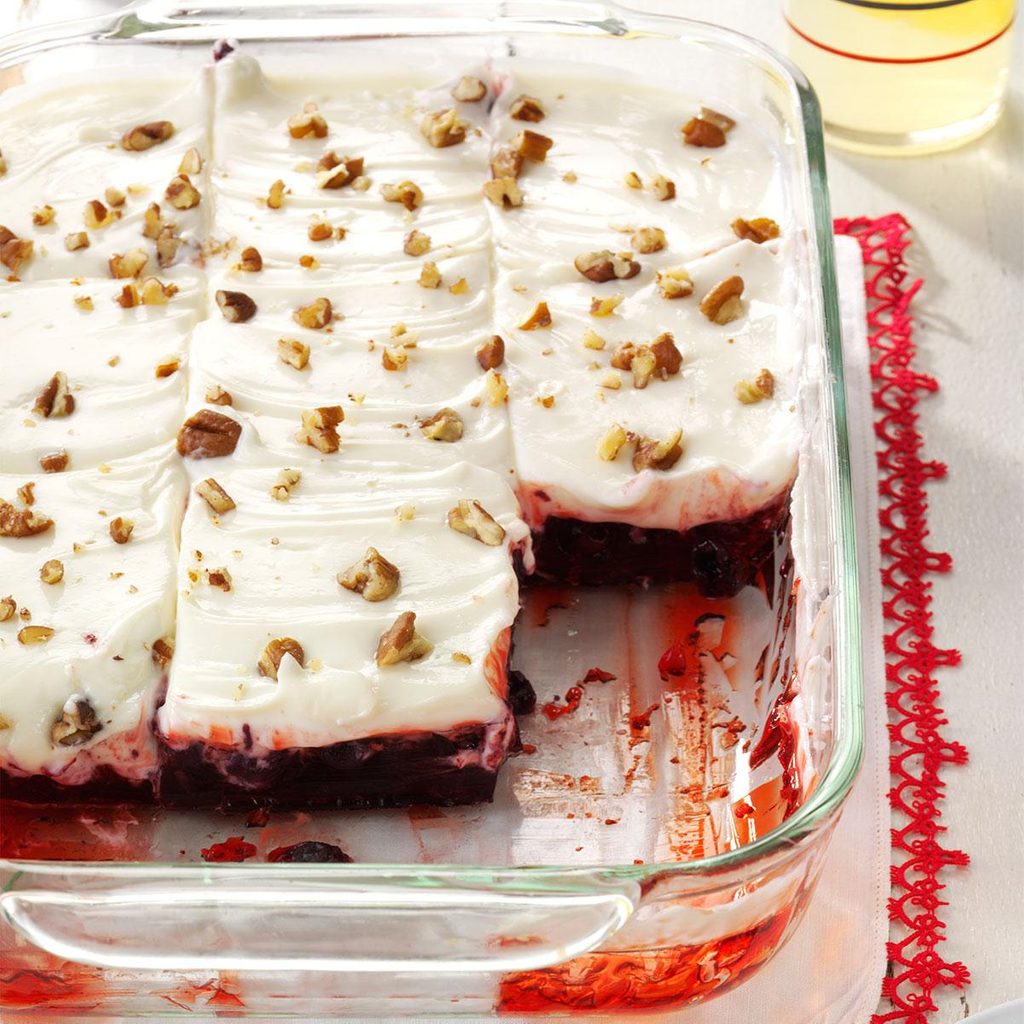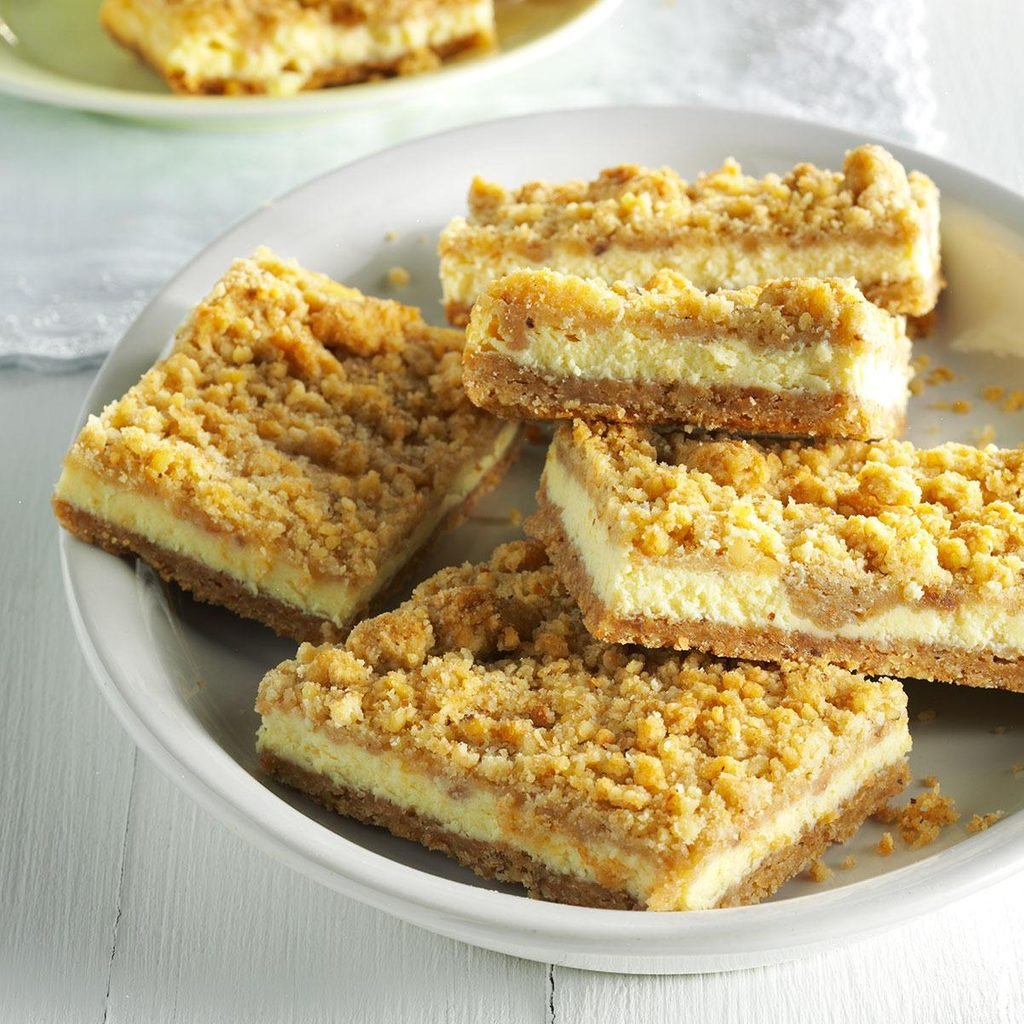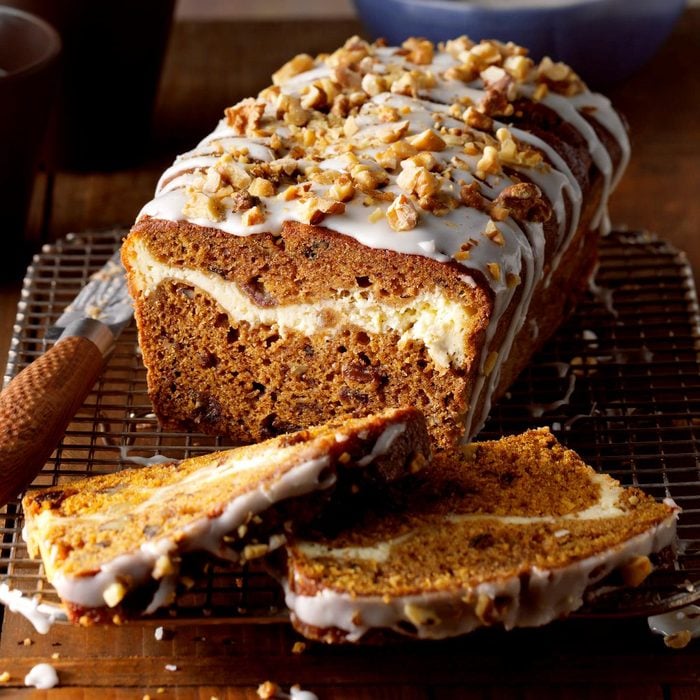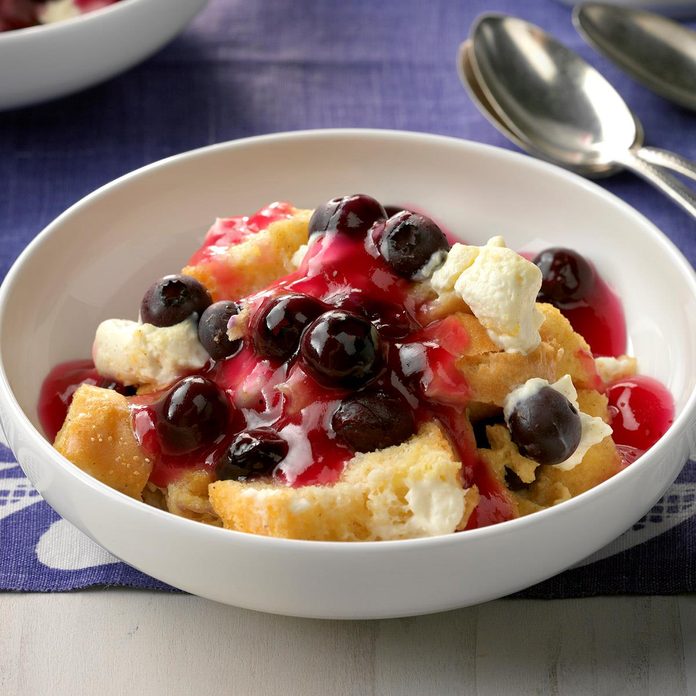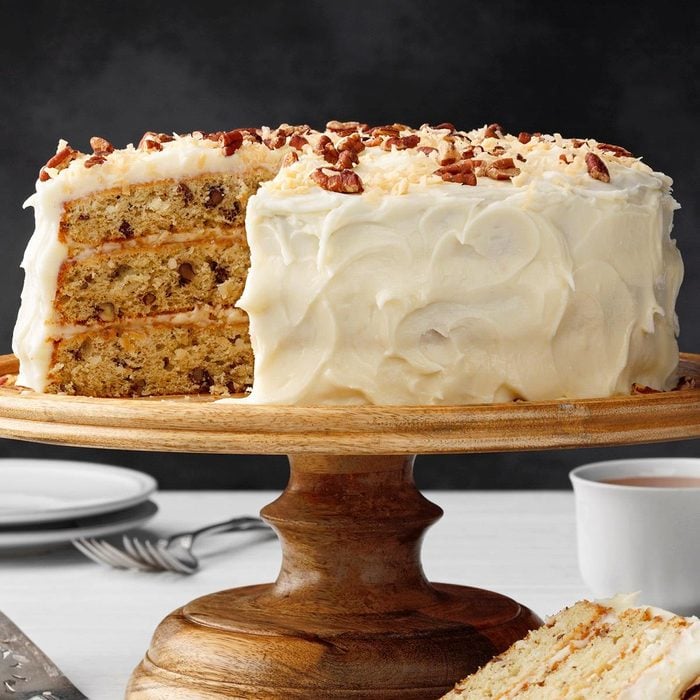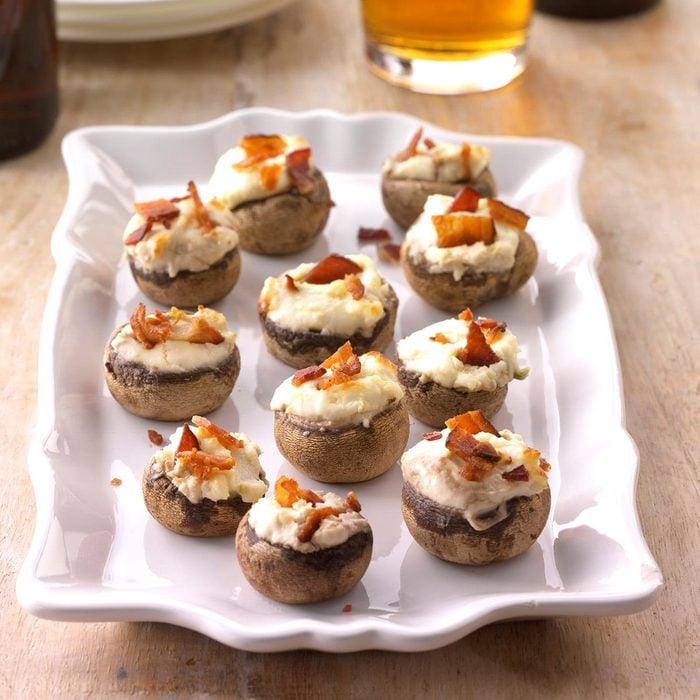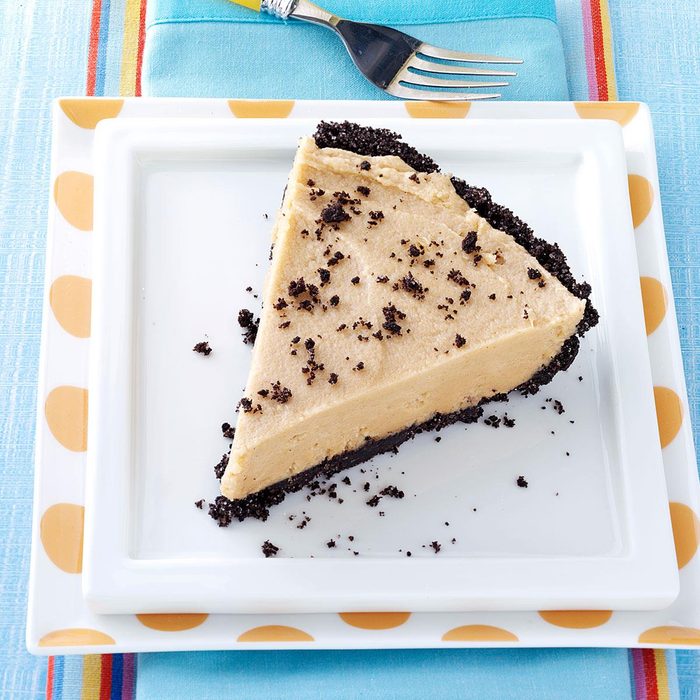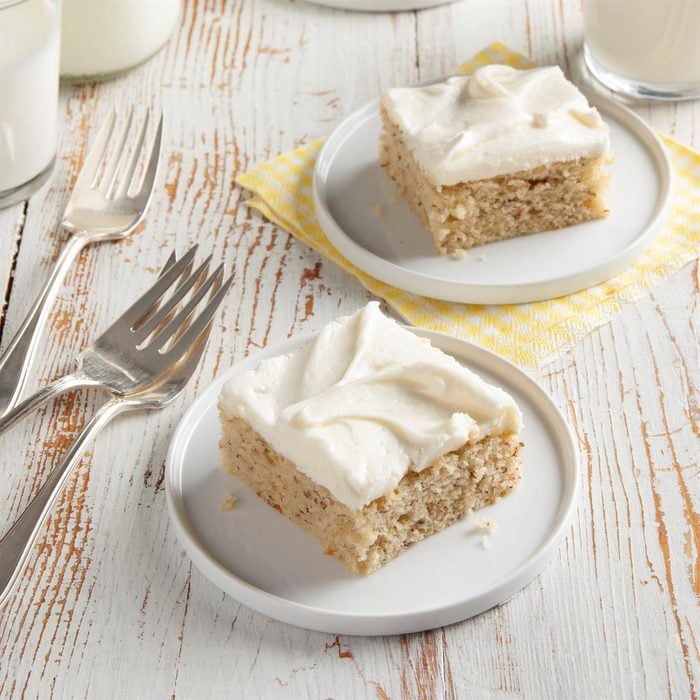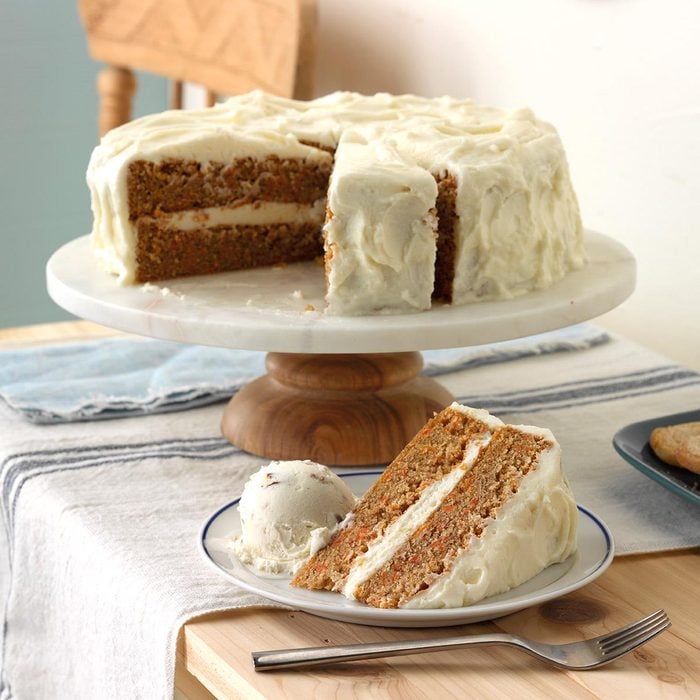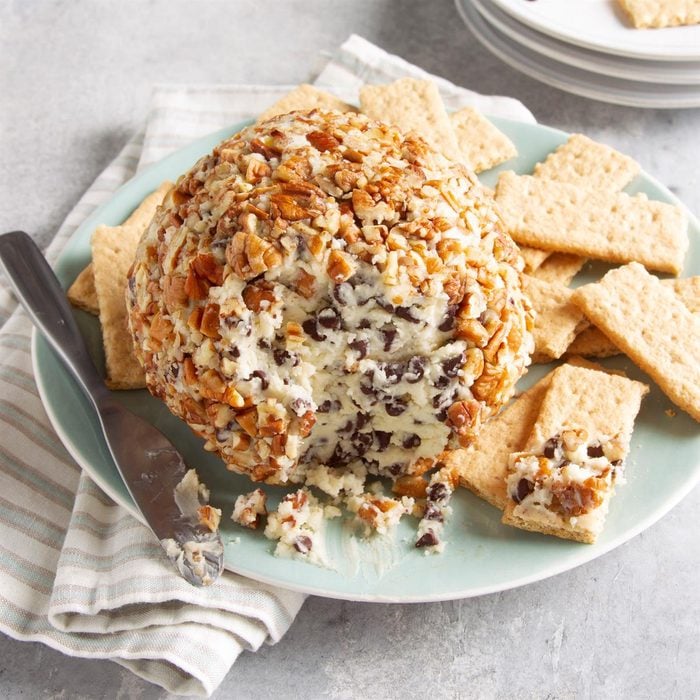Chocolate Bavarian TorteWhenever I take this eye-catching torte to a potluck, I get so many requests for the recipe. —Edith Holmstrom, Madison, Wisconsin
Lemon-Garlic Cream FettuccineI've been making this lemony pasta for the family for years. It's both simple and indulgent enough to make it a go-to recipe. —Anne Miller, Glenfield, New York
Jalapeno PoppersThese creamy stuffed jalapeno poppers have some bite. They may be the most popular treats I make! My husband is always hinting that I should make a batch. —Lisa Byington, Johnson City, New York
Cherry Almond Mousse PieTreat your loved ones to a luscious pie with chocolate, cherries and nuts in a creamy vanilla mousse. It's a sweet yet refreshing dessert. —Dorothy Pritchett, Wills Point, Texas
Chocolate Truffle CheesecakeIf you delight in the taste of chocolate, then this is the cheesecake for you. Every creamy bite melts in your mouth. It's so impressive yet not difficult to prepare-I whip up this dessert each time I want a yummy treat for my family, friends or co-workers. —Mary Jones, Cumberland, Maine
Grape SaladEveryone raves when I bring this refreshing, creamy grape salad to potlucks. For a special finishing touch, sprinkle it with brown sugar and pecans. —Marge Elling, Jenison, Michigan
Luscious Almond CheesecakeI received this recipe along with a set of springform pans from a cousin at my wedding shower 11 years ago. It makes a heavenly cheesecake. My son Tommy has already told me he wants it again for his birthday cake this year. —Brenda Clifford, Overland Park, Kansas
Baked Simple Meatball StroganoffIf you like meatball subs, you'll love this tangy casserole that has all the rich flavor of the popular sandwiches with none of the mess. Italian bread is spread with a cream cheese mixture, then topped with meatballs, spaghetti sauce and cheese. Bravo! —Gina Harris, Seneca, South Carolina
Appetizer Tortilla PinwheelsA friend gave me this recipe, and whenever I serve these tortilla pinwheel sandwiches, people ask me for the recipe, too! The cream cheese pinwheels can be made ahead of time and sliced just before serving, leaving you time for other last-minute party preparations. —Pat Waymire, Yellow Springs, Ohio
Quicker Blueberry French ToastSit down to hot-off-the-griddle stuffed French toast and fresh blueberry sauce in as little as 30 minutes. The bread's toasted to a golden brown, and the delectable filling features cream cheese brightened with blueberry preserves. The fast sauce is out of this world! —Taste of Home Test Kitchen
Peanut Butter Cream PieDuring the warm months, it's nice to have this fluffy, no-bake peanut butter pie that's a snap to make. Packed with flavor, this pie gets gobbled up even after a big meal! —Jesse & Anne Foust, Bluefield, West Virginia
Strawberries and Champagne CheesecakeI bake from scratch because I believe that love—and sweetened condensed milk—are the best ingredients. —Kathryn Work, Louisville, Kentucky
Easy Chicken EnchiladasThis chicken enchiladas recipe is so quick and easy, and I always receive a ton of compliments. It quickly becomes a favorite of friends whenever I share the recipe. Modify the spiciness with the intensity of the salsa and the green chiles to suit your taste. —Kristi Black, Harrison Township, Michigan
Jalapeno Popper & Sausage DipMy workplace had an appetizer contest, and I won it with my jalapeno and cheese dip. Every time I take it anywhere, folks empty the slow cooker. —Bev Slabik, Dilworth, Minnesota
Pumpkin Mousse TrifleYou can speed up this recipe by using a store-bought pound cake or baking and freezing one ahead of time. The sugared pecans can also be prepared in advance and stored in an airtight container.—Becky McClaflin, Blanchard, Oklahoma
Creamy Italian ChickenItalian salad dressing mix is like a secret weapon for adding flavor to this creamy chicken dish. Served over rice or pasta, this Italian dressing chicken is rich, delicious and special enough for company. —Maura McGee, Tallahassee, Florida
The Ultimate Grilled CheeseThese gooey grilled cheese sandwiches taste great for lunch with sliced apples. And they're really fast to whip up, too. Here's how to make grilled cheese the right way. —Kathy Norris, Streator, Illinois
Cheesecake with Berry SauceThis creamy cheesecake is a family tradition; I've even shipped it to my daughter as a special treat. Using frozen seasonal berries, it's an excellent dessert any time of year. —Jeanette Volker, Walton, Nebraska
Blueberry Gelatin SaladI find myself making this blueberry jello salad often. People request this layered treat for potlucks all the time. This dish can be served as either a salad or a dessert. And preparing it a day ahead makes it taste even better! —Mildred Livingston, Phoenix, Arizona
Nutty Cheesecake SquaresI grew up on a farm and have had a lot of good recipes handed down to me. This is one of my favorite desserts to serve when guests come over or at family gatherings and church suppers. —Ruth Simon, Buffalo, New York
Championship Bean DipMy friends and neighbors expect me to bring this irresistible dip to every gathering. When I arrive, they ask, "You brought your bean dip, didn't you?" If there are any leftovers, we use them to make bean and cheese burritos the next day. —Wendi Wavrin Law, Omaha, Nebraska
Pumpkin Swirl BreadThis combination of pumpkin, nuts and dates makes a delicious, golden pumpkin cream cheese bread. The surprise inside—a rich creamy swirl—is like a luscious layer of cheesecake in each slice. —Cindy May, Troy, Michigan
Baked Spinach Dip LoafAny round loaf works as a serving bowl for this cream-cheesy dip, with spinach, cheddar, water chestnuts and, yes, bacon. Scoop the dip with the extra bread and veggies—then eat the bowl! —Frieda Meding, Trochu, Alberta
Potato ChowderOne of the ladies in our church quilting group brought this savory potato soup to a meeting, and everyone loved how the cream cheese and bacon made it so rich. It's easy to assemble in the morning so it can simmer on its own all day. —Anna Mayer, Fort Branch, Indiana
Cherry Tomato BitesCherry tomatoes may be small, but these are full of amazing flavor. Plus, they add color to any table. —Rev. David Bostedt, Zephyrhills, Florida
Slow-Cooked Blueberry French ToastYour slow cooker can be your best friend on a busy morning. Just get this recipe going, run some errands and come back to the smell of French toast ready to eat. —Elizabeth Lorenz, Peru, Indiana
Sesame Chicken DipI can't tell you how many times I'm asked to bring this easy dip to holidays, birthday parties or girls' weekend getaways. It's fresh and light, and it has the Asian flavors that make it stand out. The rice crackers are a must! —Dawn Schutte, Sheboygan, Wisconsin
Coconut Italian Cream CakeI’d never tasted an Italian cream cake before moving to Colorado. Now I bake for people in the area, and this beauty is one of the most requested. —Ann Bush, Colorado City, Colorado
Veggie-Packed StrataThis is a wonderful, colorful casserole that everyone enjoys. I'm sure you'll be hooked on it after one bite, too. —Jennifer Unsell, Vance, Alabama
Bittersweet Chocolate CheesecakeI'm a great-grandmother, and my whole family enjoys this dessert. I received this recipe from my niece. It's very chocolaty. —Amelia Gregory, Omemee, Ontario
Creamy Make-Ahead Mashed PotatoesWith five different dairy products, you know this make-ahead mashed potato casserole is going to be super rich and, of course, delicious. It gets even better topped with onions and bacon! —JoAnn Koerkenmeier, Damiansville, Illinois
Black Forest CheesecakeI have taken this popular cheesecake to every gathering since I created the recipe about 15 years ago. My family asks for the dessert all the time, and I'm happy to make it. —Christine Ooyen, Winnebago, Illinois
Fruit TartIt's well worth the effort to whip up this creamy fruit tart bursting with juicy berries. A friend gave me the recipe, and it always receives rave reviews at gatherings. —Susan Terzakis, Andover, Massachusetts
Bacon-Stuffed MushroomsI first tried these bubbly treats at my sister-in-law's house. The tender mushroom caps and creamy filling were so fabulous that I had to get the recipe. It's hard to believe how simple, fast and easy they are. —Angela Coffman, Kansas City, Missouri
Chocolate Peanut PieI entered this pie in our county fair, and it was selected grand champion. Who can resist a tempting chocolate crumb crust and a creamy filling with big peanut butter taste? Be prepared to take an empty pan home when you serve this pie at your next potluck. —Doris Doherty, Albany, Oregon
Banana Bars with Cream Cheese FrostingI make these banana bars with cream cheese frosting whenever I have ripe bananas on hand, then store them in the freezer to share later. With creamy frosting and big banana flavor, this treat is a real crowd-pleaser. —Debbie Knight, Marion, Iowa
Creamy Buffalo Chicken DipThis slightly spicy dip cleverly captures the flavor of Buffalo chicken wings. Using canned chicken eases preparation. —Allyson DiLascio, Saltsburg, Pennsylvania
Old-Fashioned Carrot Cake with Cream Cheese FrostingA pleasingly moist cake, this treat is the one I requested that my mom make each year for my birthday. It's dotted with sweet carrots and a hint of cinnamon. The fluffy buttery frosting is scrumptious with chopped walnuts stirred in. One piece of this carrot cake with cream cheese frosting is never enough—it's better than all the other carrot cakes I've tried! —Kim Orr, West Grove, Pennsylvania
Chocolate Chip Cheese BallYour guests are in for a sweet surprise when they try this chocolate chip cheese ball—it tastes just like cookie dough! Rolled in chopped pecans, this chip-studded spread is wonderful on regular or chocolate graham crackers. I especially like it because it can be assembled in a wink. —Kelly Glascock, Syracuse, Missouri
